All over the Internet, gardeners are being introduced to Sempervivums. Their uses include topiaries, living walls, living wreaths, and a vast array of creative container gardening ideas. Learning about these small beauties and how to care for them will help ensure your success in incorporating them into your gardens.
Sempervivums are known by the common names of "Hens and Chicks" and "Houseleeks," as well as other lesser known names. Jovibarba, which was once a genus but now is a synonym for some Sempervivum species, may also be known as "Rollers" or "Beard of Jupiter." With the proper care, these plants can be grown in a wide range of US zones: from zone 3 up to zone 9. In their native habitat, many grow on rocks with minimal soil available, which makes them ideal for crafting and container gardening. They do require fast-draining soil and lots of sun. In areas with extreme summer heat and/or drying wind conditions, afternoon shade or filtered light would be best.
These amazing plants come in a wide range of leaf colors: green, gold, red, orange, purple, chocolate, and tan, in many different shades of each color and combinations of various colors. Many change color from one season to another. Leaf textures range from smooth to webby or fuzzy. Size varies from 1/8" or less across a rosette, to 10" or more.
In their native habitat, Sempervivums receive little moisture in the summer and are covered in snow for the long winter months. When watering, don’t saturate the soil. You want the water to drain fairly quickly and the soil to be somewhat dry by the next day. You’ll know to irrigate if the leaves start to show signs of dehydration. It is best to water them sparingly if you have a combination of hot and humid conditions. In hot and dry conditions, you should water in the cool of the evening. Too much water is also a problem. A top dressing of grit/pea gravel keeps the leaves from rotting during the periods of heavy rainfall I have in winter and spring in the Pacific Northwest.
Most Sempervivums reproduce by offsets attached to a stolon. The stolons of these are fragile and break easily, allowing the tiny offsets to roll away from the parent rosette before forming roots. This is how they earned their common name of ‘Rollers.’ Each rosette will live for several years before flowering. By then, you will have many new plants.
Sempervivum heuffelii, on the other hand,do not reproduce by offsets. Instead, they produce new rosettes within the mother plant's crown and thick root system. These must be divided with a knife by cutting through the crown and root. Each new plant must contain a piece of healthy root and crown in order to survive on its own.
Flowers are usually a pale pink to red, with an occasional plant producing white, pale yellow, or pale green blooms. The flowers of the Sempervivum species once known as Jovibarba species are pale cream or yellow blooms.
 |
 |

|
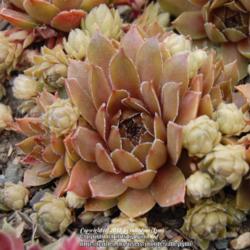
|
|
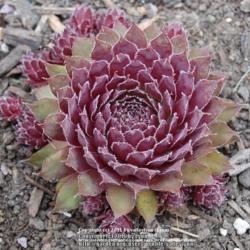
|

|

|
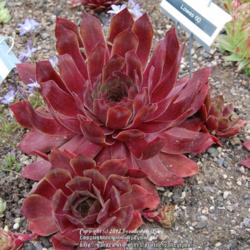
|
The interesting part of growing these plants is that they cross pollinate easily, providing endless opportunities for creating new and exciting cultivars. The new cultivar hybridized by Don Mylin, S. ‘New Rhumba,’ a Sempervivum with variegated striped leaves, and S. ‘Fuzzy Wuzzy’ hybridized by Kevin Vaughn, with an abundance of narrow, fuzzy leaves, are some examples. There are mutations, such as S. ‘Oddity,’ S. ‘Griggs Surprise,’ S. ‘Whirl-i-gig,’ and S. ‘Fame Monstrose,’ and we can’t forget the excitement of finding a fasciated sempervivum, such as S. ‘Astrid’ or S. 'Crested Fuzzy Wuzzy.'
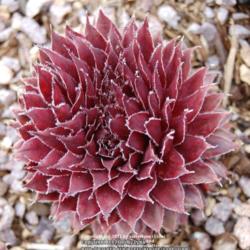
|
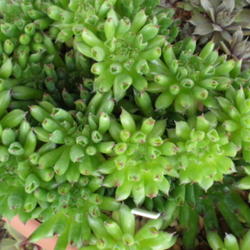
|
|
There are a number of Sempervivum series, such as the "Lord of the Rings" series. You can easily find the lists of available series in the Sempervivum Forum. It is also easy to search for the entire list of a particular series by using the "Search" feature in the database. For instance, "Sempervivum American Indian" will bring up all of the Sempervivums in that series. The "Search by characteristics" option is another great feature for searching by many other characteristics you desire in a Sempervivum, such as size or leaf color.
Terminology:
 |
 |
 |
I invite you to join us in the Sempervivum Forum to share your experiences with these amazing plants, and participate in a never-ending learning experience.
| Thread Title | Last Reply | Replies |
|---|---|---|
| Semps Revisited by blue23rose | Nov 28, 2016 8:12 AM | 3 |
| Jovibarba by HamiltonSquare | Jan 27, 2016 7:43 PM | 1 |
| Excellent Article by clintbrown | Mar 13, 2013 6:22 PM | 42 |